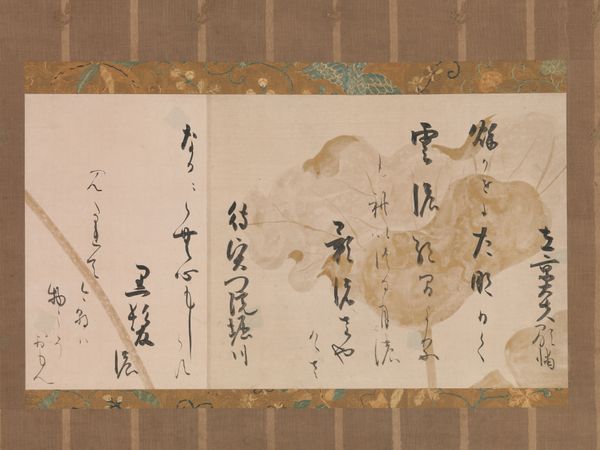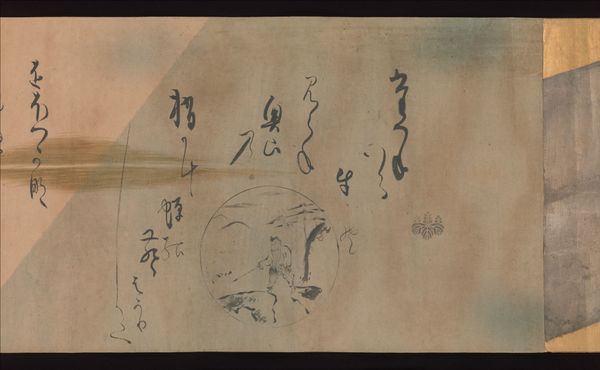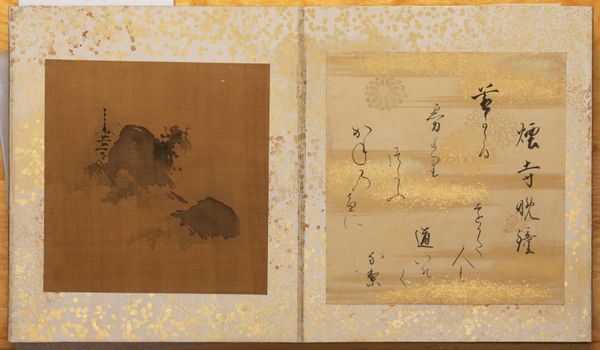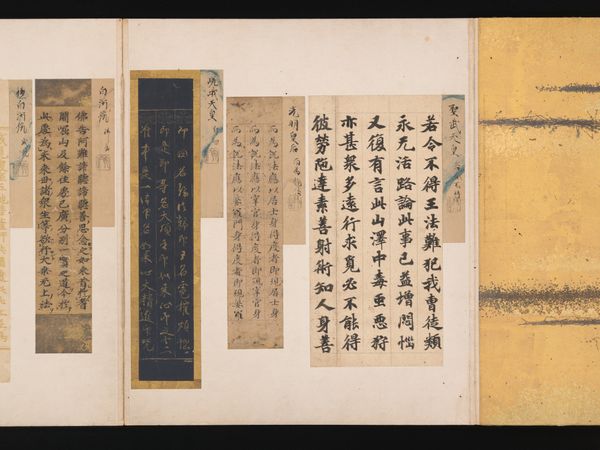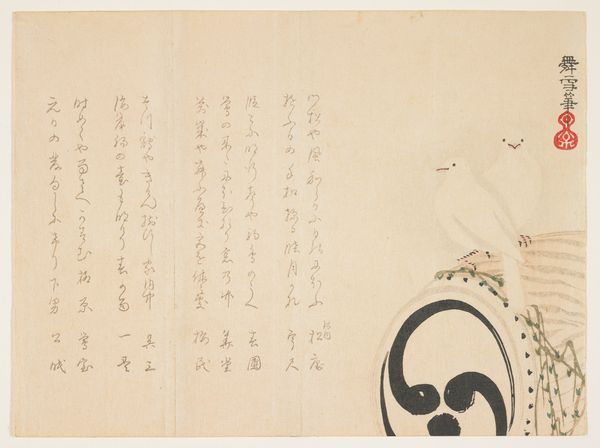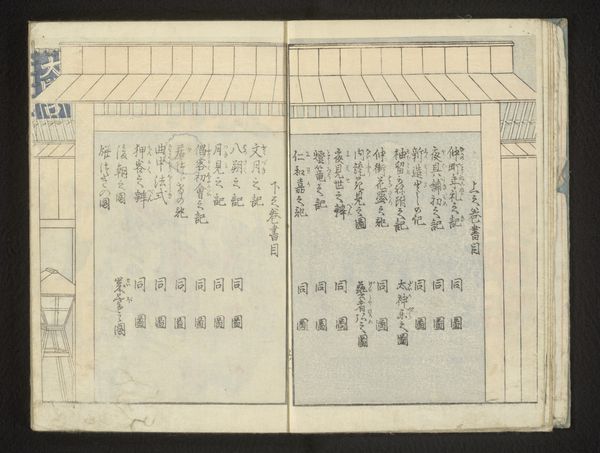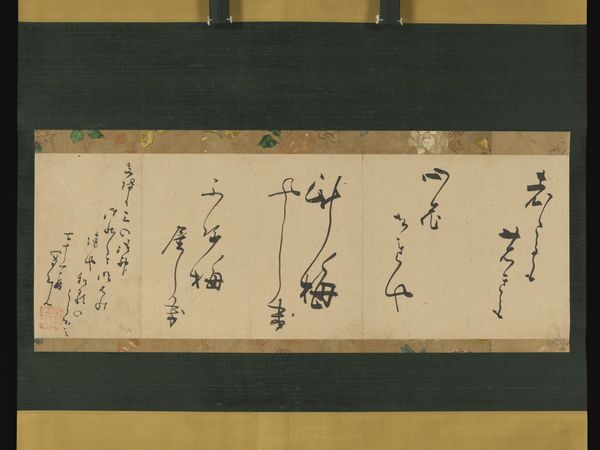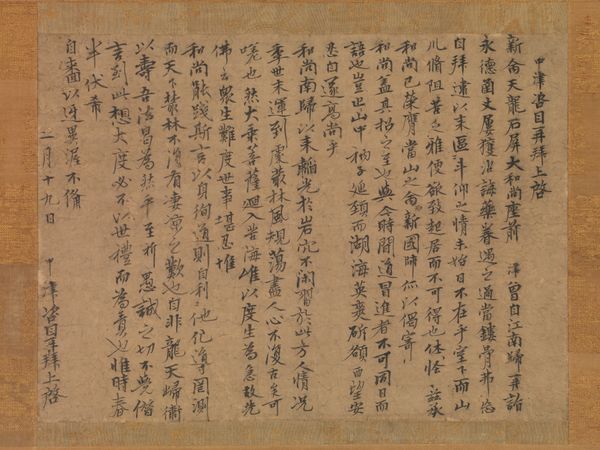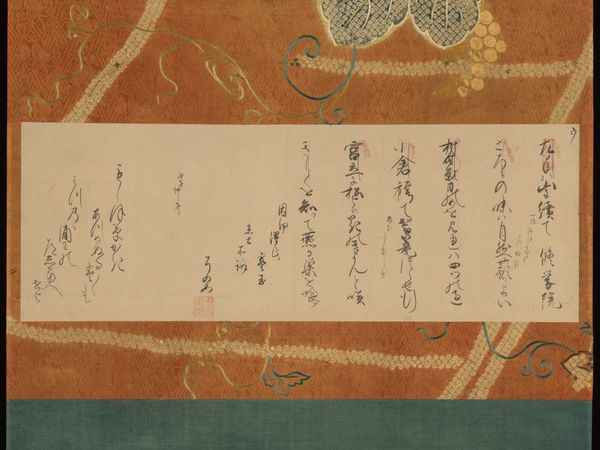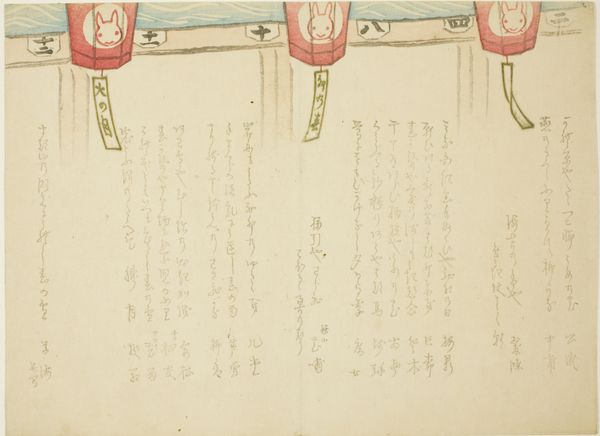![Fifty-four Scenes from the Tale of Genji [right of a pair] by Tosa Mitsuoki](/_next/image?url=https%3A%2F%2Fd2w8kbdekdi1gv.cloudfront.net%2FeyJidWNrZXQiOiAiYXJ0ZXJhLWltYWdlcy1idWNrZXQiLCAia2V5IjogImFydHdvcmtzLzk4ZWY1MTVhLWQ1NDgtNDA2ZC1hMjcwLWJlMDA4OTNiMGU2Yi85OGVmNTE1YS1kNTQ4LTQwNmQtYTI3MC1iZTAwODkzYjBlNmJfZnVsbC5qcGciLCAiZWRpdHMiOiB7InJlc2l6ZSI6IHsid2lkdGgiOiAxOTIwLCAiaGVpZ2h0IjogMTkyMCwgImZpdCI6ICJpbnNpZGUifX19&w=3840&q=75)
Fifty-four Scenes from the Tale of Genji [right of a pair] c. late 17th century
0:00
0:00
painting, watercolor
#
water colours
#
narrative-art
#
painting
#
asian-art
#
watercolor
#
genre-painting
#
history-painting
#
miniature
#
watercolor
#
yamato-e
Dimensions: 43 3/4 × 143 3/4 in. (111.13 × 365.13 cm) (image)
Copyright: Public Domain
Curator: Before us, we have a section of a screen titled "Fifty-four Scenes from the Tale of Genji," made around the late 17th century by Tosa Mitsuoki. Editor: The first thing that strikes me is the feeling of opulent tranquility. The gold background really makes it glow, doesn't it? The vignettes are placed with an eye to decorative harmony, a feast for the eyes before you even register what you’re looking at. Curator: Precisely. The "Tale of Genji" was already an established classic by this period. Screens such as these helped perpetuate its cultural authority within elite circles. This specific screen painting also participates in the traditions of yamato-e, that distinctly Japanese style of painting which favors narrative scenes and a focus on native subject matter. Editor: The images, they feel like glimpses, like looking through little windows into a vanished world. The text accompanying each scene-- snippets of poetry, I presume-- contributes to the impression of entering fragments of a dream, potent, romantic, fleeting. Curator: The pairing of text and image was a key element to disseminating The Tale of Genji and making it even more central to court society and other noble elites, solidifying its presence within the cultural canon. Editor: I’m curious about the decision to isolate each scene like this. Were viewers expected to know the narrative intimately or were these intended to spark curiosity? Did the cultural cachet come from recognizing the specific scenes or simply appreciating that they originated from The Tale of Genji? Curator: All the above, I think. The Genji was almost omnipresent. Its imagery pervaded the arts and the lives of court society, a status symbol that everyone recognized. The work reinforces elite cohesion by using universally-understood symbolism. But isolating scenes may have also added an element of meditation. Editor: So this piece blends elements of art, status, culture, and even a subtle spiritual exercise. Curator: In essence, yes. An object that signifies both immense cultural authority and a distinctly Japanese aesthetic. Editor: Knowing even a fraction of that helps one understand that this glimmering surface holds layer upon layer of meaning. Curator: A microcosm reflecting both the glories of a single narrative and the social rituals around art in 17th-century Japan.
Comments
minneapolisinstituteofart almost 2 years ago
⋮
Pictures and short passages of text brushed on 108 small squares of paper arranged on the surface of these screens represent the entirety of The Tale of Genji, with a text-image pairing for each of the Tale’s 54 chapters. Reading the passages of classical Japanese written in elegant calligraphy or identifying a specific scene from the Tale and recalling the characters and dramas involved could provide hours of fun for the screens’ owners and guests. But the screens also could have served simply as a luxurious backdrop for some gathering.
Join the conversation
Join millions of artists and users on Artera today and experience the ultimate creative platform.


